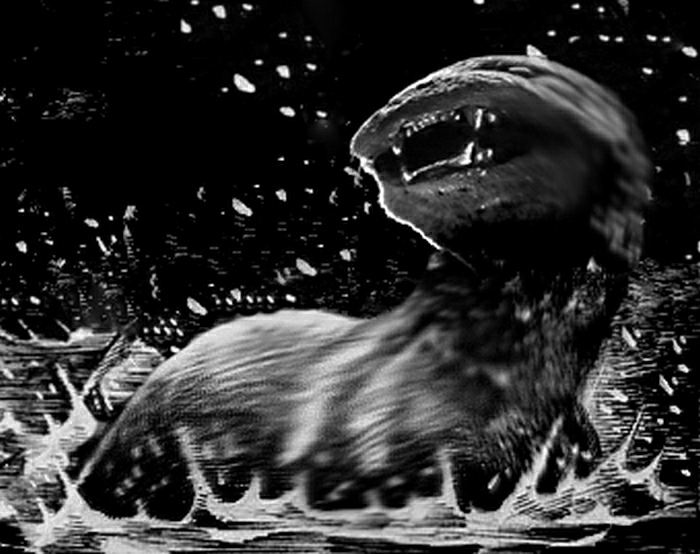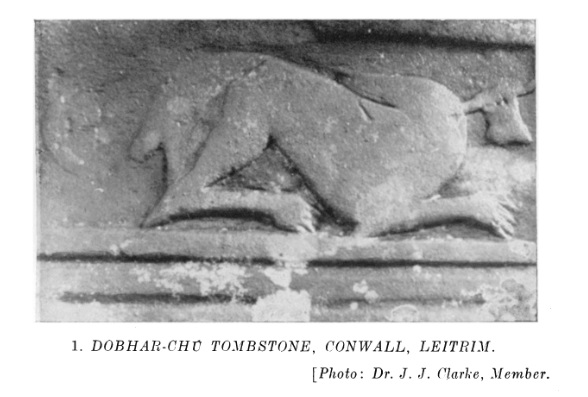Preproduction
I began this assignment by looking to Irish folklore for ideas. I was already familiar with mythical animals of Scottish and Welsh folklore like selkies, kelpies, cath palug etc. But I realised I didn’t know many Irish folk creatures other than those with human forms like banshees, leprechauns and the Tuatha Dé Danann in general. It didn’t take long to find a more underappreciated creature of Irish folklore that I felt drawn to and wanted to make a character design based off of.
When I first learned of the Dobhar Chú I liked the simplicity of its name, ‘water hound’ when directly translated to English. However I found most artists interpretations online drew more from its alternative name, ‘King Otter’. Some theorize that Dobhar Chú could be a descendant of Siamogale Melilutra a prehistoric species of otter that was about 50kg, slightly larger than the grey wolves that used to live in Ireland. Its hard to imagine an otter so large and powerful compared to the native otters here in the British Isles, the closest relative to Siamogale Melilutra today would be the giant river otters of South America, but they are only about 30kg.

This worked conveniently with the only depiction of Dobhar Chú I could find from the same time as it was believed to really dwell in the lakes and rivers around Ireland, particularly in Leitrim’s Glenade Lough where a local woman’s grave from the 18th century credits Dobhar Chú as her cause of death. The tombstone features a relief of the creature, portrayed as a slender canine with long legs, tail and snout. It’s proportions reminded me of sighthounds, particularly greyhounds and borzois but I also wanted to consider Irish wolfhounds and Scottish deerhounds as they are old breeds that look like the dogs people would have been familiar with at that time.
I kept this image in mind when I started designing my character. Initially I wanted to create a version of the Dobhar Chú that served as a sympathetic character, drawing attention to environmental issues in Ireland, in particular algae blooms caused by agricultural pollution and sewage treatment. I think the image of a canine is perfect for the role of representing our eco system due to the duality as a wild and dangerous apex predator that should be respected and revered but also potentially a neglected pet that needs to be better cared for to work in harmony with humans. However I wasn’t sure how to blend both sides or to show a transition/contrast between an imposing, strong and threatening beast and a sickly, almost defeated creature. For my initial concept I leaned more towards the sympathetic side but I maintained a somewhat healthy appearance with a thick mane of fur and only subtle ribs showing. Anatomically I followed the silhouette of a borzoi dog but shortened the legs and elongated the body to make them look more adapted for swimming like an otter.





 Before starting my block-out I had to make a final reference. I made some adjustments from the initial design, the most noticeable being the removal of the algae as I wasn’t sure if I would have time to push texturing with such details. I also went for a more accurate borzoi build rather than the short and long otter-like shape. I preferred this along with adding thicker fur around the mane and musculature along the shoulders and back as it created a more regal and healthy appearance. I could say there was a meaningful reason for leaning into this rather than the sickly original design but truthfully after looking for reference images of underweight dogs I simply didn’t want to work on something sad considering how time consuming 3D is for me.
Before starting my block-out I had to make a final reference. I made some adjustments from the initial design, the most noticeable being the removal of the algae as I wasn’t sure if I would have time to push texturing with such details. I also went for a more accurate borzoi build rather than the short and long otter-like shape. I preferred this along with adding thicker fur around the mane and musculature along the shoulders and back as it created a more regal and healthy appearance. I could say there was a meaningful reason for leaning into this rather than the sickly original design but truthfully after looking for reference images of underweight dogs I simply didn’t want to work on something sad considering how time consuming 3D is for me.
sources:
Anonymous, ‘Leitrim Observer Reporter’. (2018) The tale of Leitrim’s own Loch Ness Monster – the Dobhar-Chú – Lietrim Observer [online] available at: https://www.leitrimobserver.ie/news/features/334274/the-tale-of-leitrim-s-own-loch-ness-monster-the-dobhar-chu.html [acessed 23rd Dec. 2024]
Von Radowitz, John. (2017). Does prehistoric otter explain Dobhar-chú myth? – Irish Independant [online] available at: https://www.independent.ie/irish-news/does-prehistoric-otter-explain-dobhar-chu-myth/36306533.html?registration=success®=true [accessed 23rd Dec. 2024]



